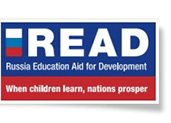Ahead of the Transforming Education Summit, the UNESCO Institute for Statistics’ (UIS) education data release provides new information including on benchmark indicators so that all education stakeholders can see where countries stand in their progress towards SDG 4.
It also provides an opportunity for the UIS, along with the Global Education Monitoring Report (GEM Report), to advocate for alignment of approaches for monitoring, while keeping track of the Summit’s aspirational statements to hold governments and the international community accountable.
Proposals include applying the national SDG 4 benchmarking process to a small number of flagship indicators. These could be existing indicators such as proportion of trained teachers (Indicator 4.c.1); or flagship indicators based on SDG indicators such as ‘Learning Poverty’; SDG 4 indicators that could be benchmarked (e.g. proportion of schools connected to the internet, Indicator 4.a.1); and new indicators aligned with the SDG 4 targets showcasing issues that have taken centre stage at the Summit (e.g., proportion of green schools or proportion of schools with school meals programme) and which could be considered during the upcoming 2025 Review of the SDG monitoring framework and eventually benchmarked.
New data now available in the SDG 4 database contains information on over 200 countries, including: disaggregated data on the proportion of children and young people achieving at least a minimum proficiency level in reading and mathematics (Indicator 4.1.1); the participation rate in organized learning, one year before the official primary entry age (Indicator 4.2.2); the enrolment ratio for tertiary education (Indicator 4.3.2); and the participation rate of youth and adults in formal and non-formal education and training in the previous 12 months (Indicator 4.3.1) where 58 countries have been added for the first time.
In this release, the UIS is adding new administrative data from the UIS Survey of Formal Education and the UOE data collection for 128 countries. The UIS’ new approach to data collection, using dynamic templates to produce 23 indicators on students, teachers, schools, and education expenditure, has resulted in significant increases in data coverage for SDG 4 indicators (e.g., Indicator 4.1.2, completion rate) and for Other Policy Relevant Indicators (e.g., gross enrolment ratio).
The report can be found here.







